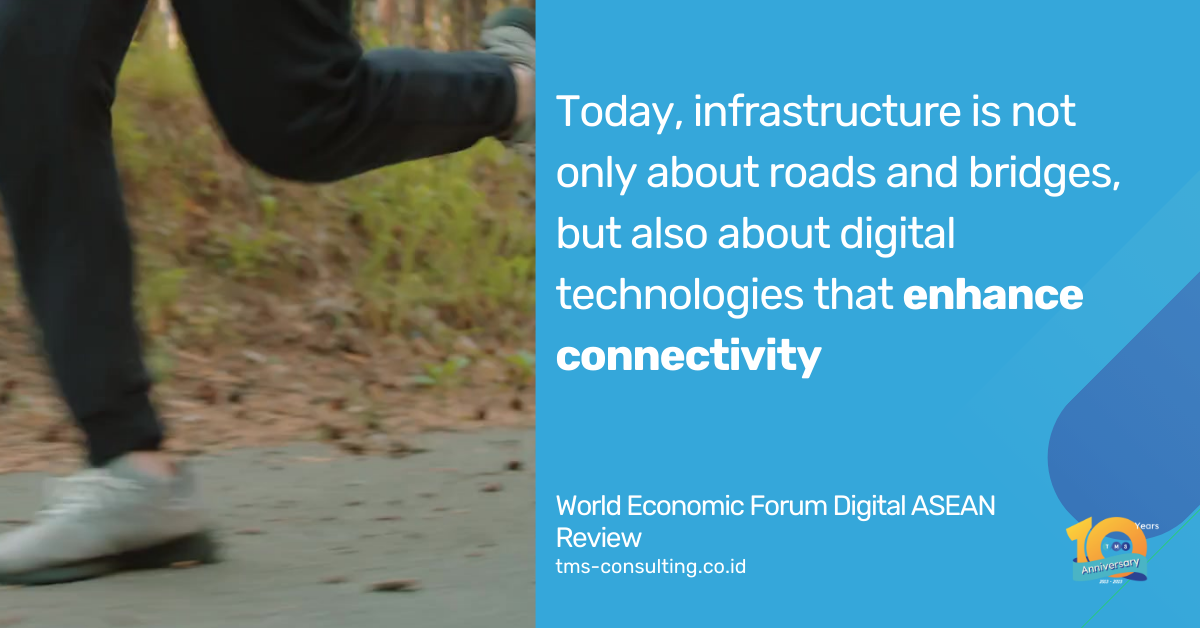Introduction
Infrastructure development has always been a cornerstone of economic growth, particularly in Southeast Asia. However, with the advent of digital transformation, the role of infrastructure has evolved. Today, infrastructure is not only about roads and bridges but also about digital networks, data centers, and smart technologies that enhance connectivity, efficiency, and resilience. This article explores the intersection of traditional infrastructure and digital transformation in Southeast Asia, highlighting its potential to lead economic recovery and growth, especially in the post-pandemic era.
The Role of Infrastructure in Economic Recovery
Southeast Asia’s economies were severely impacted by the COVID-19 pandemic, necessitating immediate public health and economic responses. The decline in economic activity led governments to recognize the importance of infrastructure in recovery efforts. Infrastructure investment is a proven method to stimulate economic activity through higher construction outputs and job creation. Moreover, high-quality infrastructure development creates a legacy of sustainable growth, positioning economies to better withstand future shocks.
Digital Transformation: A New Pillar of Infrastructure Development
Digital transformation has become a key pillar in modern infrastructure projects. The World Economic Forum’s Digital ASEAN initiative emphasizes the importance of digital infrastructure in bridging economic divides and fostering regional collaboration. The initiative aims to accelerate digital integration across ASEAN by enhancing digital connectivity, developing a regional data framework, and supporting digital skills and literacy. By leveraging digital transformation, Southeast Asian countries can enhance their infrastructure projects, making them more resilient and future-ready.
Case Studies: Digital Infrastructure Initiatives in Southeast Asia
- Indonesia’s Digital Economy: Indonesia is rapidly embracing digital transformation as part of its broader infrastructure strategy. The government has focused on enhancing digital infrastructure, particularly in the realm of e-commerce, fintech, and digital payments. The “National Logistics Ecosystem” (NLE) is one example where digital transformation is being integrated into logistics infrastructure, streamlining supply chain processes and reducing inefficiencies.
- Smart Cities in the Region: Southeast Asia’s urbanization presents both challenges and opportunities. Cities like Singapore, Jakarta, and Kuala Lumpur are investing in smart city initiatives that combine physical infrastructure with digital technologies. These projects aim to improve urban mobility, energy efficiency, and public services through the integration of IoT (Internet of Things) and AI (Artificial Intelligence).
Sustainable and Resilient Infrastructure
Southeast Asia’s focus on infrastructure extends beyond economic recovery; it also aims to address sustainability and resilience. Governments are increasingly prioritizing green infrastructure projects that contribute to a low-carbon future. Renewable energy projects, particularly solar and wind, are being fast-tracked as part of national recovery plans. For instance, Malaysia’s 1GW solar tender is part of its COVID-19 recovery effort, which is expected to attract significant investment and create thousands of jobs.
Moreover, sustainable financing mechanisms, such as green bonds and sustainability-linked loans, are gaining traction. These financial instruments are crucial for funding infrastructure projects that align with environmental, social, and governance (ESG) criteria, ensuring that infrastructure development supports long-term sustainability goals.
Public-Private Partnerships: A Collaborative Approach
The collaboration between governments and the private sector is essential in driving infrastructure development. Public-private partnerships (PPPs) are particularly effective in leveraging private sector innovation and capital for public infrastructure projects. These collaborations help ensure that projects are not only financially viable but also align with the broader goals of sustainability and digital integration
Conclusion
The integration of digital transformation into infrastructure development is not just a trend but a necessity for Southeast Asia. As the region seeks to recover from the economic impact of COVID-19 and prepare for future challenges, investments in both physical and digital infrastructure will be crucial. By embracing digital technologies and sustainable practices, Southeast Asian countries can build resilient economies that are better equipped to handle future disruptions and capitalize on growth opportunities.
TMS Consulting is here to be your trusted partner on this exciting journey. With our commitment to Innovation, TMS Consulting can help you unlock your full potential and achieve sustainable growth in the digital age. Talk to us today and take the first step to being a part of the embracing digital transformation!
References:
World Economic Forum. Digital ASEAN
McKinsey&Company. Unlocking Indonesia’s digital opportunity
Deloitte. Leading Southeast Asia’s Economic Recovery
Deloitte. Smart Cities, How rapid advances in technology are reshaping our economy and society






